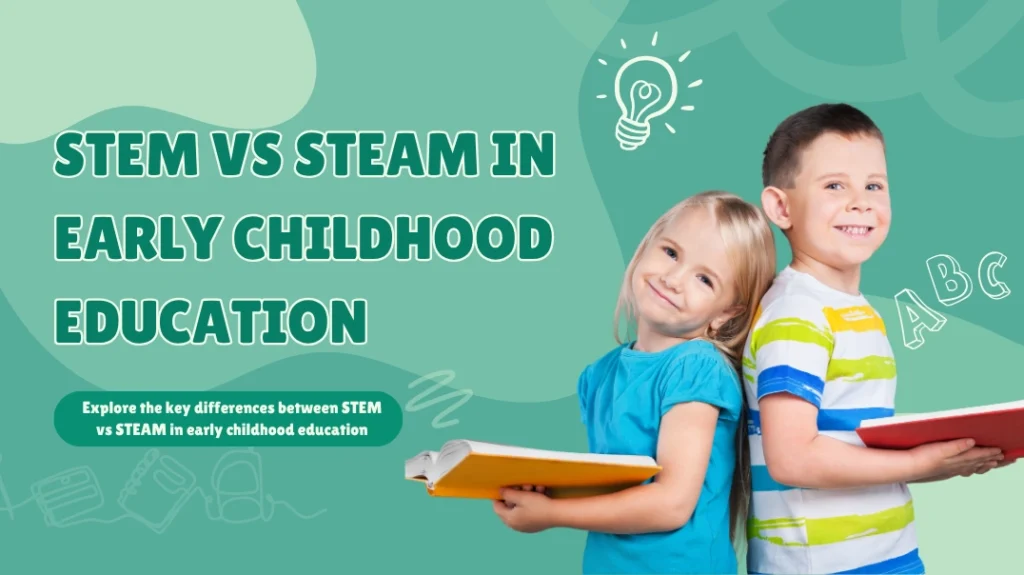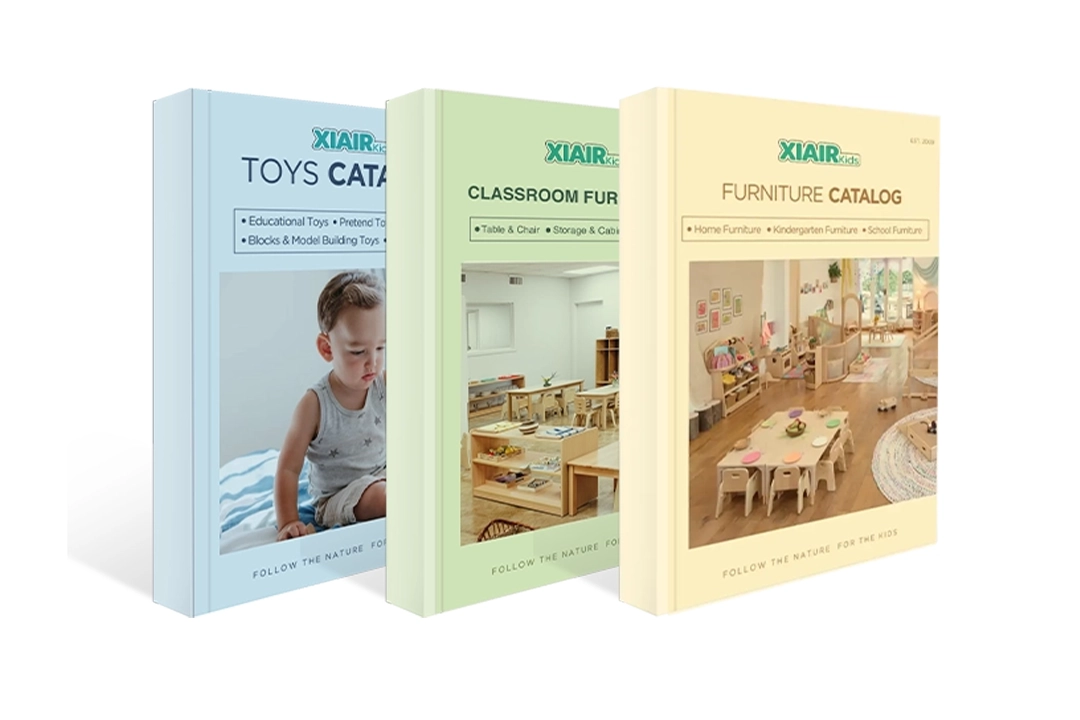STEM vs STEAM describes two frameworks for teaching and learning in early childhood. STEM is an approach based on science, technology, engineering, and mathematics. STEAM includes all of these and adds the arts. While both support skill development, they differ in focus and teaching philosophy.
Why are educators comparing STEM and STEAM now? Because early childhood education is shifting toward more integrated and flexible models. Educators and school leaders want to understand how STEM and STEAM can shape learning outcomes, classroom design, and even long-term planning.
When should you use STEM vs STEAM? This depends on your goals. STEM may support inquiry, precision, and structure. STEAM opens up room for creativity, collaboration, and emotional expression. Understanding this timing helps in curriculum design.
Where do STEM and STEAM work best? In environments that are intentionally designed. STEM and STEAM both require space that allows children to explore, build, test, reflect, and share. The physical layout of the room directly affects how these approaches succeed.
Who benefits from STEM vs STEAM? Children, of course—but also educators, administrators, and families. These models provide clear ways to support critical thinking, imagination, and real-world skills from a young age.
How should you choose between STEM and STEAM? By understanding what each offers and how your space, goals, and teaching style can support them. This article provides a side-by-side look at STEM vs STEAM, what they mean in practice, and how thoughtful environments help both succeed.
What is STEM?
STEM is a teaching approach that combines science, technology, engineering, and mathematics. Early childhood education focuses on how children explore problems, think critically, and build logical understanding from a young age. STEM is not about teaching facts or using computers. It’s about creating environments where children learn by doing—touching, building, testing, and asking questions.
The goal of STEM in early learning is to help children develop practical skills that connect to real-world thinking. These include observation, measurement, prediction, and reasoning. When children work with materials, solve challenges, and reflect on their process, they build habits that support long-term learning.
STEM also improves focus and language development. As children talk about their ideas and explain their thinking, they learn how to communicate clearly and confidently. This connection between thought and expression is one of the key outcomes of strong early STEM programs.
Educators using STEM need more than just tools or toys. They need space that supports problem-solving, group discussion, and trial-and-error. Furniture that invites flexible use, open layouts, and zones for exploration all support the flow of STEM learning.
To better understand how STEM works in practice and how to support it through space and teaching, read our full article:
What Is STEM Education in Early Childhood?
What is STEAM?
STEAM is an educational model that builds on STEM by adding the arts. It includes science, technology, engineering, arts, and mathematics. The purpose of STEAM is to combine logical and creative thinking in one learning experience. While STEM teaches structure and problem-solving, the arts bring imagination, emotion, and expression into the process.
The shift from STEM to STEAM reflects a broader understanding of how young children learn. In early childhood education, it is not enough to focus only on logic and numbers. Children also need to explore feelings, communicate ideas, and use their senses to understand the world. STEAM allows them to do that while still developing strong reasoning and technical skills.
The importance of STEM in early childhood education is widely accepted, but many educators now see that adding the arts makes learning more complete. In STEAM, children are not just solving problems—they are also learning to tell stories, work together, and build confidence through expression. This makes STEM and STEAM both powerful models, each offering a different but connected learning path.
The benefits of STEM in early childhood are clear: improved thinking, better focus, and stronger communication. STEAM includes all of those, and adds emotional growth, social understanding, and a deeper connection to learning. This is why many schools are asking: What is STEM vs STEAM, and which is better for their goals?
Though some discussions use the phrase STEAM vs STEM, these two models are not in conflict. They offer different tools for the same purpose: helping children grow through active, meaningful learning.
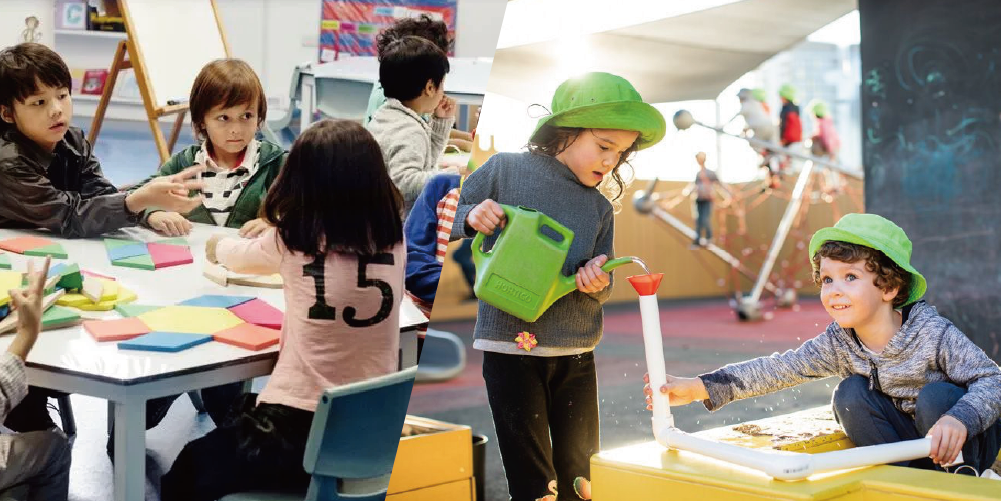
STEM vs STEAM: Key Differences
Both STEM and STEAM are used widely in early childhood education. While they follow different paths, they are built on the same foundation. Understanding where they align and where they diverge can help educators make more informed choices.
| Similar |
|---|
- Both are based on science, technology, engineering, and mathematics.
- Both promote problem-solving, observation, and experimentation.
- Both support early development in logic, reasoning, and collaboration.
| Different |
|---|
- STEAM includes the arts, adding creativity and emotional expression.
- STEM tends to follow a fixed process; STEAM allows more flexible paths.
- STEM is often goal-oriented; STEAM is more process-focused.
- STEM is used when precision is needed; STEAM when open exploration is encouraged.
- STEM outcomes are measurable; STEAM includes subjective or emotional outcomes.
- STEM focuses on what is correct; STEAM values multiple possible answers.
- TEM often reflects traditional academic models; STEAM promotes cross-disciplinary thinking.
- STEM builds logic, sequencing, focus, and analytical thinking. STEAM builds imagination, collaboration, emotional intelligence, and flexible problem-solving.
How It Looks in the Classroom
The way STEM and STEAM appear in early childhood classrooms can vary greatly. To understand how these models influence real teaching environments, it’s helpful to look at how children interact, how learning is structured, and how these methods shape thinking. Each model creates a unique experience that influences how both educators and children engage with the process of learning.
How children interact differently
In early learning classrooms, STEM and STEAM influence how children interact with materials, peers, and teachers. In a STEM setting, children are more likely to work on structured tasks, follow sequences, and engage in focused problem-solving. Their interactions are centered around logic, tools, and process-based discussion. Group work may involve roles like planner, tester, or recorder, with an emphasis on task completion and accuracy.
In contrast, in STEAM-based classrooms, interaction is often more fluid and expressive. Children might co-create a project through drawing, movement, or conversation. Dialogue becomes a tool for sharing ideas rather than just solving problems. Collaboration includes emotional support, turn-taking in creative expression, and open-ended group work. The focus is less on following steps and more on exploring shared ideas.
This difference in interaction reflects the core shift from outcome-driven logic to process-rich expression in STEM and STEAM learning.
STEM-style and STEAM-style learning
STEM-style learning tends to be goal-oriented. Activities are often organized around tasks like building, measuring, or testing. Children are guided to observe, collect data, and draw conclusions. Teachers lead children through inquiry and support logical connections. The experience is often linear, and success is measured by whether the solution works as expected.
STEAM-style learning, by contrast, integrates open-ended thinking. A task may involve similar themes—like engineering or nature—but include elements of storytelling, music, or drawing. Instead of one correct path, multiple pathways are valid. Teachers facilitate exploration and reflection, allowing students to use emotional or sensory cues to build understanding. The structure supports creativity within the topic rather than just problem resolution.
These two styles show how STEM and STEAM affect not only the content but also the way young children learn through it.
How these methods shift learning mindsets
The methods behind STEM and STEAM do more than organize lessons—they shape how children approach learning as a whole.
STEM builds a mindset based on logic, cause and effect, and methodical thinking. Children develop confidence through clarity and process. They become more focused, goal-driven, and skilled at breaking problems into parts.
STEAM, on the other hand, encourages flexibility. It supports a mindset that values curiosity, self-expression, and openness to change. Children grow confident in taking risks, adapting ideas, and learning through emotional connections. Instead of aiming for the “right” answer, they ask deeper questions and look for many possibilities.
Both methods contribute to strong early development, but they shape learners in different ways. This difference is critical when planning how to integrate STEM and STEAM into any learning program.
Turning Ideas into Practice
Translating STEM and STEAM from theory into practice requires more than choosing the right activities. It involves intentional design at every level—from the daily schedule to the physical environment. For early learning programs, success depends on how well the environment supports the learning process.
Learning needs space to unfold
Both STEM and STEAM rely on exploration. But for that exploration to happen, children need room to move, access materials, and connect ideas. In a well-designed early childhood environment, learning is not confined to a single table or a rigid time block. Instead, the space encourages flow—between thinking, doing, and sharing.
онд STEM-focused classrooms, this often means areas where children can test, repeat, and refine ideas. These spaces support hands-on learning with structured tools and surfaces that invite process thinking. Furniture that allows grouping and reconfiguration helps children follow steps while collaborating with others.
онд STEAM-based classrooms, space must support more flexible interaction. Children might shift between drawing, building, and speaking without a clear separation. Creative zones, soft materials, and display surfaces give them freedom to connect emotional and logical thinking. Layouts need to support expression just as much as inquiry.
Materials matter just as much as methods
How children access materials affects how they think. In STEM learning, materials often support building, counting, measuring, and sequencing. Access should be direct, predictable, and purposeful. Well-organized shelves, labeled bins, and consistent locations help children develop routines and stay focused.
онд STEAM environments, materials must also invite creativity. Loose parts, open-ended resources, and tactile tools allow children to personalize their process. Materials that blur the line between play and learning—like fabric, found objects, or storytelling props—encourage emotional investment and narrative exploration.
Teachers need to think about not just what materials are available, but how they’re introduced and displayed. The physical setup plays a silent role in guiding attention, interaction, and curiosity.
STEM-Focused Environments
Furniture:
- Adjustable-height worktables
- Collaboration desks for small teams
- Tool storage shelves
- Clear tabletop stations for experiments
Learning Materials:
- Interlocking building kits (blocks, gears)
- Measurement tools (rulers, scales, beakers)
- Sorting trays and pattern boards
- Соронзон хавтан
- Early logic and coding games
STEAM-Focused Environments
Furniture:
- Art easels and mobile creative stations
- Soft seating areas for storytelling or music
- Display panels for showcasing student projects
- Open shelving for loose materials
- Modular play corners with mixed-use surfaces
Learning Materials:
- Drawing, painting, and collage tools
- Fabric, paper, felt, and natural textures
- Sensory bottles and expressive materials
- Found objects for open-ended creation
- Clay, wire, and sculpture elements
- Story prompts, puppets, and role-play tools
- Musical instruments and sound kits
Environment as a co-teacher
In early childhood education, the environment is often called “the third teacher.” This is especially true when applying STEM and STEAM principles. Whether the goal is precision or expression, the space should reinforce the learning process.
Flexible furniture, mobile zones, and clear organization help children take ownership of their learning. Soft transitions between task types encourage flexible thinking. Visual access to resources reduces reliance on adult direction and supports independent problem-solving.
For programs in Australia and other regions aligning with national frameworks, embedding STEM in early childhood education is not just about curriculum—it’s about designing a space where children are free to explore with depth and purpose.
From concept to practice = from room to result
The importance of STEM in early childhood lies not just in the content, but in how well the environment supports the process. Thoughtful classroom design closes the gap between teaching and learning. It ensures that ideas are not only taught, but lived—day by day, through how children move, build, create, and reflect.
To fully incorporate STEM and STEAM into your learning program, space design should never be an afterthought. It is the invisible framework that makes meaningful learning possible.
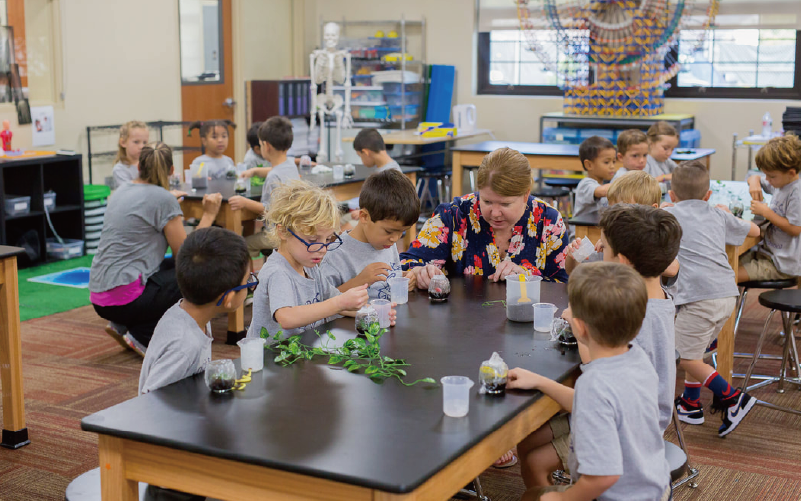
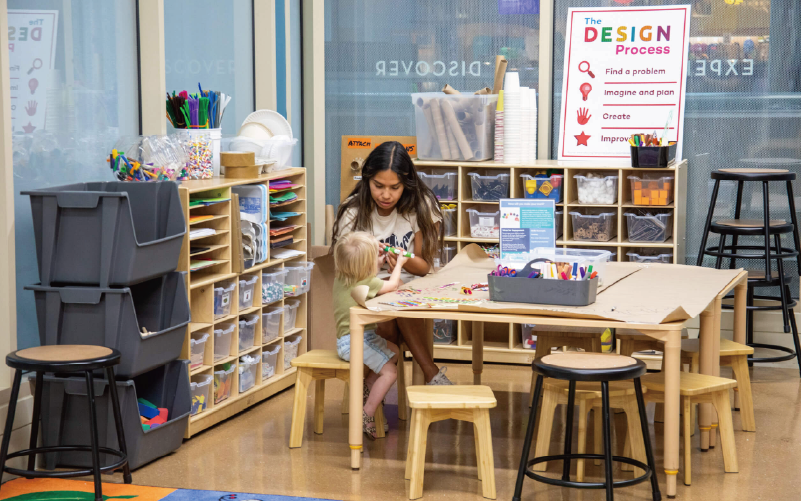
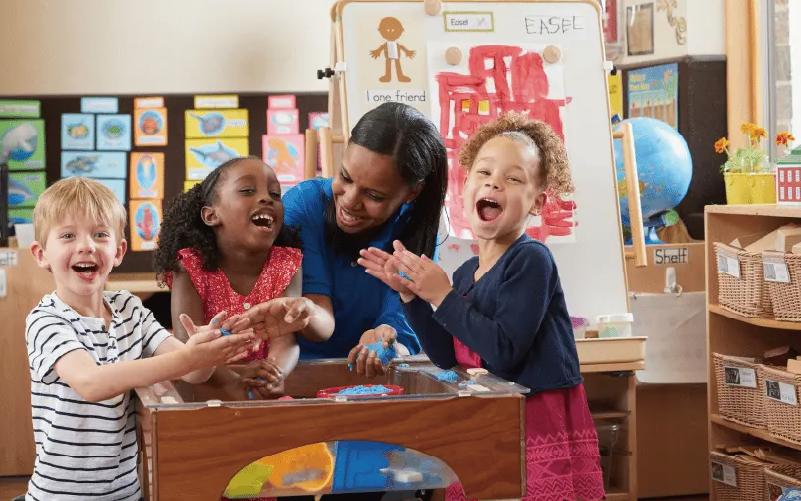
Supporting Curriculum Goals with STEM and STEAM
In early childhood education, aligning daily practice with curriculum goals is essential. Whether educators are working within Australia’s Early Years Learning Framework (EYLF), the UK’s Early Years Foundation Stage (EYFS), or the U.S. Head Start Early Learning Outcomes Framework, STEM and STEAM can be powerful tools to meet national and developmental standards.
These models support learning outcomes across multiple domains. For example, EYLF includes goals such as “children are confident and involved learners” and “children are effective communicators.” Similarly, EYFS emphasizes active learning, creativity, and thinking critically, while the U.S. framework highlights approaches to learning, cognition, and communication. Each system promotes holistic development, and STEM and STEAM naturally support those goals.
STEM activities help children explore cause and effect, apply logic, and develop persistence in solving challenges. These align with learning outcomes related to cognitive development and problem-solving capacity. This connection highlights the importance of STEM in early childhood education—not just for content knowledge, but for learning how to think and reason.
STEAM extends this by adding opportunities for emotional expression, collaboration, and reflection. Children use artistic modes to process information and express ideas, connecting learning with communication and self-awareness. These outcomes are especially relevant in frameworks that value identity formation, social learning, and cultural context.
For educators managing compliance, assessment, and planning, integrating STEM and STEAM provides clear pathways to meet documentation requirements. Activities can be mapped to specific outcomes, observations can focus on process skills, and environments can be adjusted to reinforce curriculum priorities.
Choosing to embed STEM and STEAM is not about adding more work—it’s about choosing methods that naturally reflect what early learning frameworks already value: inquiry, communication, creativity, and confident learning.
Activity Ideas and Setup Tips
Integrating STEM and STEAM into early learning doesn’t require complex programs—it requires thoughtful planning, flexible setups, and intentional use of space. While specific activities will vary by age, curriculum, and educator goals, this section offers a practical foundation for how to begin shaping a learning environment that supports both models.
These are not exhaustive methods, but rather structured starting points. In later articles, you’ll find detailed breakdowns of STEM activities and STEAM activities. For now, this section offers essential guidance on what kinds of activities work best and how to organize the space to support them effectively.
Key Activity Directions
These activity types represent the foundation of both STEM and STEAM learning. They’re broad enough to adapt to different classrooms, but specific enough to guide material and space choices.
STEM-Oriented Tasks
- Problem-solving labs
Structured tasks such as building bridges with blocks, sorting by attributes, or creating stable shapes with sticks and connectors. Children explore outcomes by testing, adjusting, and retesting. - Measurement stations
Children compare weight and volume using scales or water containers, track time with timers or stopwatches, and count or record data using physical counters. - Pattern and logic play
Sequencing games using color blocks, puzzles that follow shape rules, and interactive boards with code logic patterns help children internalize mathematical thinking.
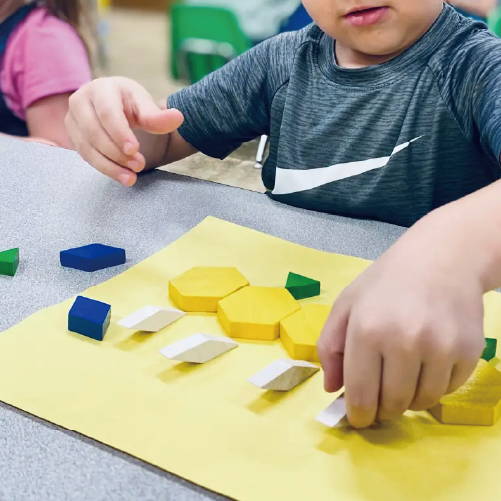
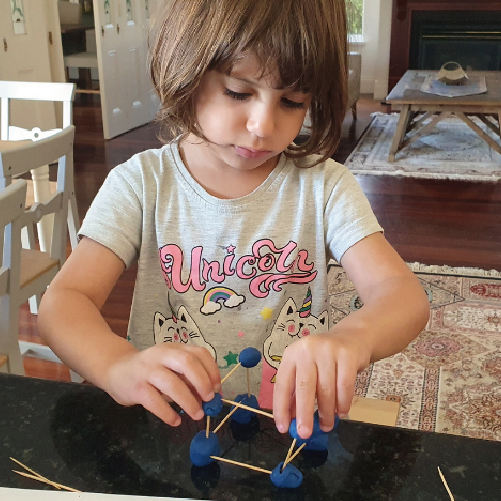
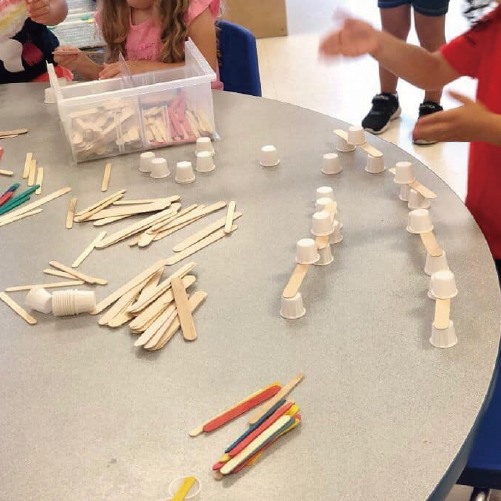
STEAM-Oriented Tasks
- Creative construction
Using recycled materials to build objects with a story, assembling shapes into creatures or tools with narrative meaning, or building emotional responses into the design process. - Visual thinking zones
Children map their ideas through diagrams, use drawing to explain a problem, or role-play a science discovery through body movement and costume. - Мэдрэхүйн хайгуул
Activities include mixing textures, exploring shadows and sound layers, or using mirrors, lights, and materials to express mood or story context.
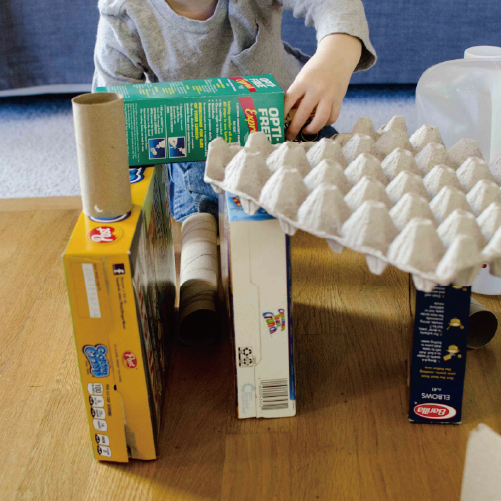
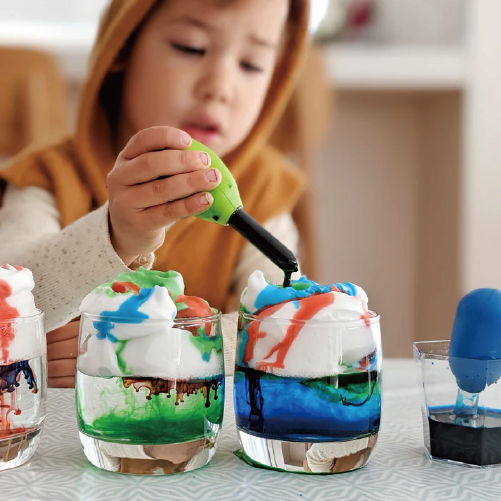
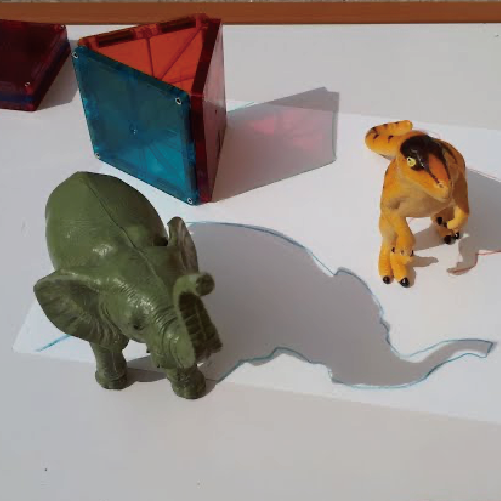
Environment Setup Strategies
To bring these activities to life, classroom design must go beyond decoration. Setups should guide thinking, support transitions, and reflect the fluid nature of children’s learning.
1. Divide zones by interaction, not subject
Create areas for solo exploration, small group discussion, and collaborative creation. Don’t label spaces “math” or “art”—design for “focus,” “expression,” or “invention.”
2. Think in modular layouts
Use mobile, stackable, or reconfigurable тавилга to quickly adapt the space to the day’s needs. STEM tasks might require more structure and tools; STEAM zones may need space to move, sit low, or lay materials out widely.
3. Establish anchor points
Maintain fixed stations for essential tasks—like a coding corner or a drawing station—to give children a sense of routine, while allowing other zones to rotate weekly.
4. Use materials to invite, not overwhelm
Avoid clutter. Display only relevant materials for current tasks. Store backup resources nearby, but out of direct view, to keep children focused.
5. Prioritize transitions and flow
Arrange furniture and shelves to support intuitive movement between zones. A child leaving a hands-on STEM task should easily discover a related STEAM area for reflection or expression.
Tools to Support These Ideas
Many of the above strategies rely on the use of versatile and child-friendly materials. The furniture and learning tools outlined earlier—from modular desks to sensory-rich resources—provide the structure needed to carry out these activities with clarity and intent.
Designing your classroom to support both STEM and STEAM is not about doing more; it’s about doing what matters, with space and tools that align with how children actually learn.
Зөвхөн мөрөөдөж болохгүй, загварчлаарай! Захиалгат тавилга хэрэгцээний талаар ярилцъя!
STEM vs STEAM: Strengths, Limitations, and Use Cases
When comparing STEM vs STEAM education, it is important to recognize that neither model is “better” than the other. They serve different instructional goals and shape learning experiences in distinct ways. Understanding their relative strengths and limitations can help educators choose the right focus—or find a balanced integration of both.
Хүч чадал
| STEM | STEAM | |
|---|---|---|
| Cognitive structure | Encourages logical sequencing and analytical thinking | Expands reasoning through creative interpretation |
| Skill development | Builds precision, problem-solving, and technical fluency | Enhances communication, collaboration, and emotional awareness |
| Assessment clarity | Easier to define outcomes and measure progress | Broader reflection of process, not just results |
| Curriculum alignment | Matches well with core subjects like math and science | Connects multiple learning domains and expressive skills |
Хязгаарлалтууд
| STEM | STEAM | |
|---|---|---|
| Creativity space | May limit open expression and flexible thinking | Risk of diluted focus when arts are not purposefully integrated |
| Оюутны оролцоо | Can feel rigid for children who prefer emotional or visual learning | Can lack structure for those who thrive with clear steps |
| Implementation demands | Requires structured materials, preparation, and tools | Requires educator confidence in blending disciplines meaningfully |
| Environmental demands | Needs organized, tool-based setups | Needs adaptable, creative environments with open-ended resources |
Use Cases and Best-fit Scenarios
| STEM | STEAM | |
|---|---|---|
| Best for… | Learning goals that prioritize logic, structure, and repeatable processes | Settings focused on holistic development and creative exploration |
| Ideal environments | Programs with strong science and math integration goals | Schools emphasizing emotional intelligence, storytelling, and arts integration |
| Educator profiles | Teachers who prefer clear objectives and step-by-step guidance | Educators comfortable with ambiguity, interpretation, and cross-discipline planning |
| Student learning types | Children who thrive with patterns, sequences, and predictability | Children drawn to imagination, expression, and multiple perspectives |
Choosing between STEM vs STEAM does not have to be an either-or decision. Many early learning programs find success in combining both, adjusting the balance based on the age group, curriculum phase, or even the day’s focus. In practice, the line between them is often blurred—what matters most is intentionality.
Educators can use this comparison to determine how best to apply each model within their unique context. Whether introducing STEM in early childhood through structured tasks or layering in the arts to create a STEAM experience, the goal remains the same: support young learners in thinking deeply, exploring confidently, and expressing meaningfully.
Дүгнэлт
The conversation around STEM vs STEAM in early childhood education is not about choosing a side—it’s about choosing a strategy. Both approaches offer distinct pathways for nurturing young minds, and both are valuable in the evolving landscape of early learning.
STEM brings structure, logic, and a deepened understanding of technical skills. STEAM expands that foundation with creativity, expression, and emotional depth. When aligned with curriculum goals and supported by intentional space design, each model can create deeply engaging, meaningful learning experiences.
For educators and decision-makers, the goal is not to decide which is universally better, but rather to ask: Which approach best fits your children, your program, and your vision for learning?
With the right balance of teaching strategies, spatial design, and thoughtful materials, classrooms can evolve into environments where both STEM and STEAM flourish—not in competition, but in complement.
Түгээмэл асуултууд
1. What is STEM learning in early childhood, and how is it different from general play?
STEM learning is structured and goal-driven, while general play is open-ended. It guides children to think logically and solve problems through hands-on challenges.
2. What is STEAM learning in early childhood, and does it require art-specific resources?
STEAM invites creative expression, but doesn’t always need formal art tools. Movement, storytelling, or music can serve as the “A” in STEAM.
3. Is there a clear visual comparison for STEM vs STEAM vs STREAM?
Yes, many education sites offer infographics comparing STEM, STEAM, STREAM, and eSTREAM. These clarify the added elements in each model.
4. How is STEM in early childhood implemented differently in Australia?
Australian programs often align STEM with outdoor play, cultural learning, and sustainability, guided by the EYLF framework.
5. Can STEM and STEAM be adapted for very young learners, such as toddlers?
Yes. Through simple tasks like sorting, stacking, or sound play, toddlers can begin to develop STEM and STEAM thinking.
6. Is STEM or STEAM more effective for developing soft skills in early learners?
STEAM tends to support soft skills like empathy and communication more directly, though STEM also fosters persistence and reasoning.

